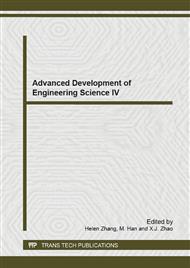[1]
Segel L. Theoretical prediction and experimental substantiation of the response of the automobile to steering control[J]. Proceedings of the Institution of Mechanical Engineers: Automobile Division, 2013, 10(1): 310-330.
DOI: 10.1243/pime_auto_1956_000_032_02
Google Scholar
[2]
Godthelp H, Milgram P, Blaauw G J. The development of a time-related measure to describe driving strategy[J]. Human Factors: The Journal of the Human Factors and Ergonomics Society, 2005, 26(3): 257-268.
DOI: 10.1177/001872088402600302
Google Scholar
[3]
Hoffmann E R. Human control of road vehicles[J]. Vehicle System Dynamics, 2013, 5(1-2): 105-126.
Google Scholar
[4]
McRuer D T, Allen R W, Weir D H, et al. New results in driver steering control models[J]. Human Factors: The Journal of the Human Factors and Ergonomics Society, 2009, 19(4): 381-397.
DOI: 10.1177/001872087701900406
Google Scholar
[5]
Allen R W, Szostak H T, Rosenthal T J. Analysis and computer simulation of driver/vehicle interaction [J]. Training, 1987, 2014: 04-02.
Google Scholar
[6]
S. E. Shladover et al. , Steering Controller Design for Automated Guideway Transit Vehicles" ASME Journal of Dynamic Systems, Measurement, and Control, March 2008, Vo1. 100.
DOI: 10.1115/1.3426335
Google Scholar
[7]
R. L. Nisonger, D. N. Wormley, Dyna. mic Performance of Automated Guideway Transit Vehicles with Dual-Axle Steering, IEEE Trans. on Vehicular Technology, Vol. VT-28, No. 1, Feb. 2011, pp.88-94.
DOI: 10.1109/t-vt.1979.23774
Google Scholar
[8]
R. E. Fenton, G. C. Melocik, K. W. Olson, On the Steering of Automated Vehicles: Theory and Experiment, IEEE Trans. on Automatic Control, Vol. AC-21, No. 3, June (2006).
DOI: 10.1109/tac.1976.1101230
Google Scholar
[9]
Y. K. Kwak, C. C. Smith, An Active and Passive Steering Controller Study of Rubber-Tired Automated Guideway Transit Vehicles, Trans. of the ASME, J. of Dynamic Systems, Measurement, and Control, Vo1. 102, Sep. 2010, pp.168-173.
DOI: 10.1115/1.3139628
Google Scholar
[10]
Louay S, Philippe C, Franck M, et. al. Human-like cybernetic driver model for lane keeping [A]. Preprints of the 18th IFAC Word Congress, Milanno [C], Italy, 2011: 4368~4373.
DOI: 10.3182/20110828-6-it-1002.02349
Google Scholar
[11]
Jing Y, N N Zheng. An expert fuzzy strategy for vehicle lateral control under urban environment [J]. International Journal of Vehicle Autonomous Systems, 2010, 8(2/3/4): 263~284.
DOI: 10.1504/ijvas.2010.035799
Google Scholar


